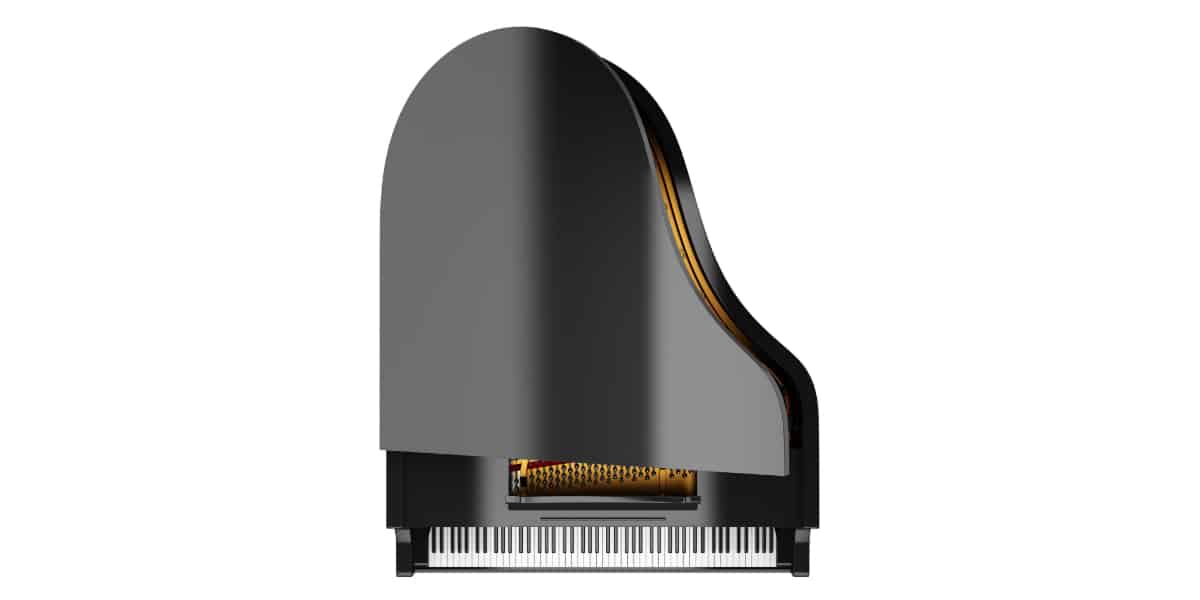Grand pianos have a distinct shape very different from uprights. Taken from its predecessor, the harpsichord, the shape of grand pianos today is the culmination of many years of upgrades made to improve the sound, volume, and tone of the instrument.
History
The shape of the harpsichord influenced the shape of the grand piano as it’s made today. However, musicians and listeners did not like the sound of the harpsichord, so manufacturers improved the sound and came up with the pianoforte.
The pianoforte was a combination of the shape of the harpsichord and the smooth tone of the clavichord. From the pianoforte, came the invention of square pianos, upright pianos, and grand pianos.
Grand pianos retained the harp shape of the harpsichord because manufacturers realized that this particular shape contributed to:
- Superior sound quality
- Enhanced volume
- Complex and effective engineering
Reasons for the harp or wing shape of grand pianos
- The shape produces better sound acoustics
The piano is a stringed and percussion instrument. The action mechanism incorporates hammers striking the strings to produce sound whenever a key is pressed. Then the following happens:
- The string vibrates with a frequency according to thickness and length.
- The soundboard amplifies the vibrations and produces sound.
- The case of the grand piano enhances the sound and volume, resulting in a tone quality above that of upright pianos.
- The shape accommodates the length of piano strings
The thickness and length of piano strings is the reason for the different pitch sounds produced when a key is pressed. The shape of the grand piano supports the length of the strings.
- The higher the note the thinner the string. This is why the slope in the grand piano corresponds with the thin strings.
- Doubling the string length reduces pitch by an octave, which explains the slope gradually going higher to accommodate the longer strings. However, going by this rule will result in really long pianos.
- Doubling the string mass also reduces pitch which is why the slope ends in a flat line where the lower notes are located.
- Changing string mass does not result in a good sound compared to doubling string length.
This is why the larger grand pianos like concert grands have better sound and tone quality compared to the smaller grand pianos. Large grand pianos will compensate for the discrepancy with a larger space to double string length and not string mass.


